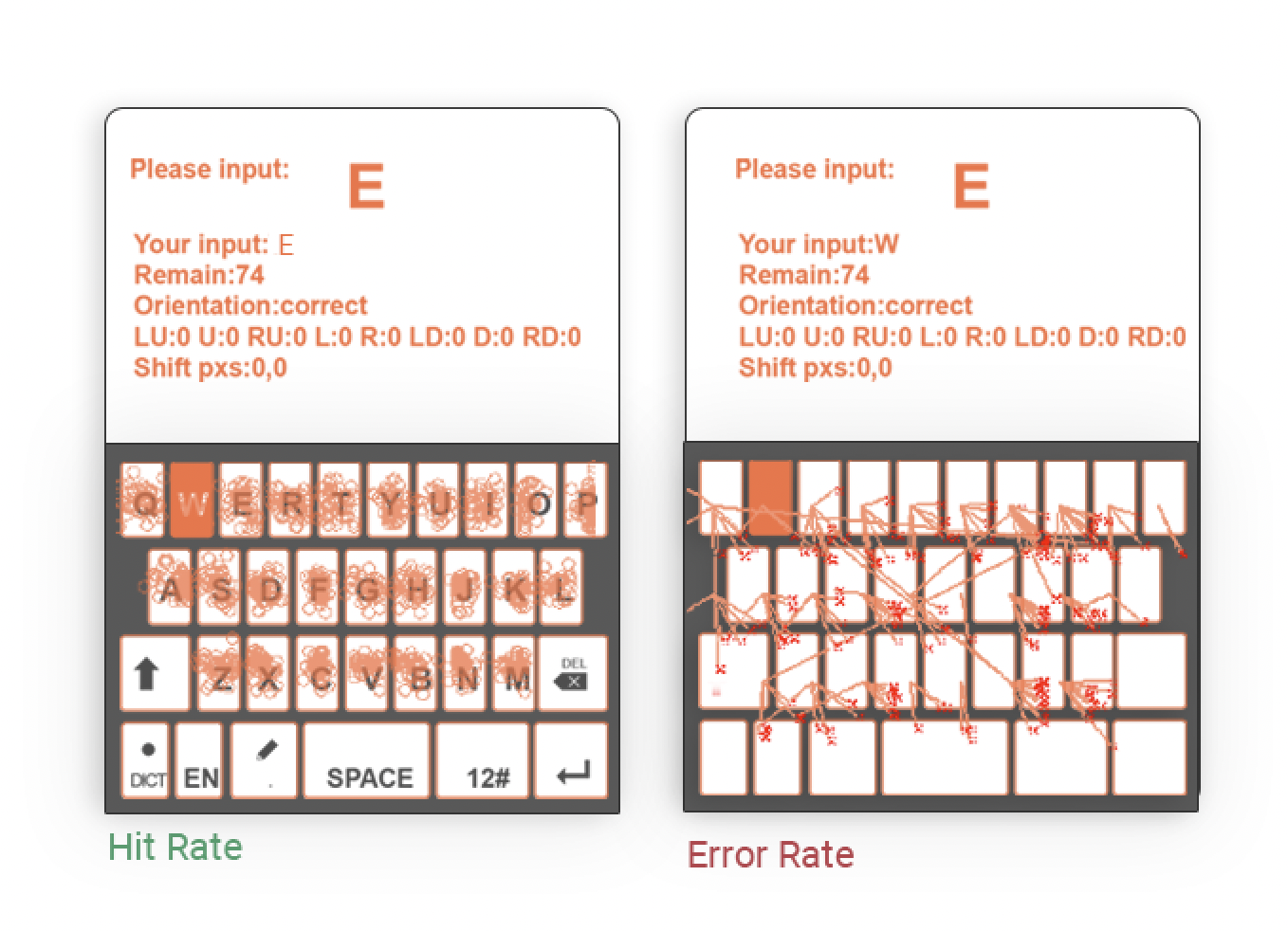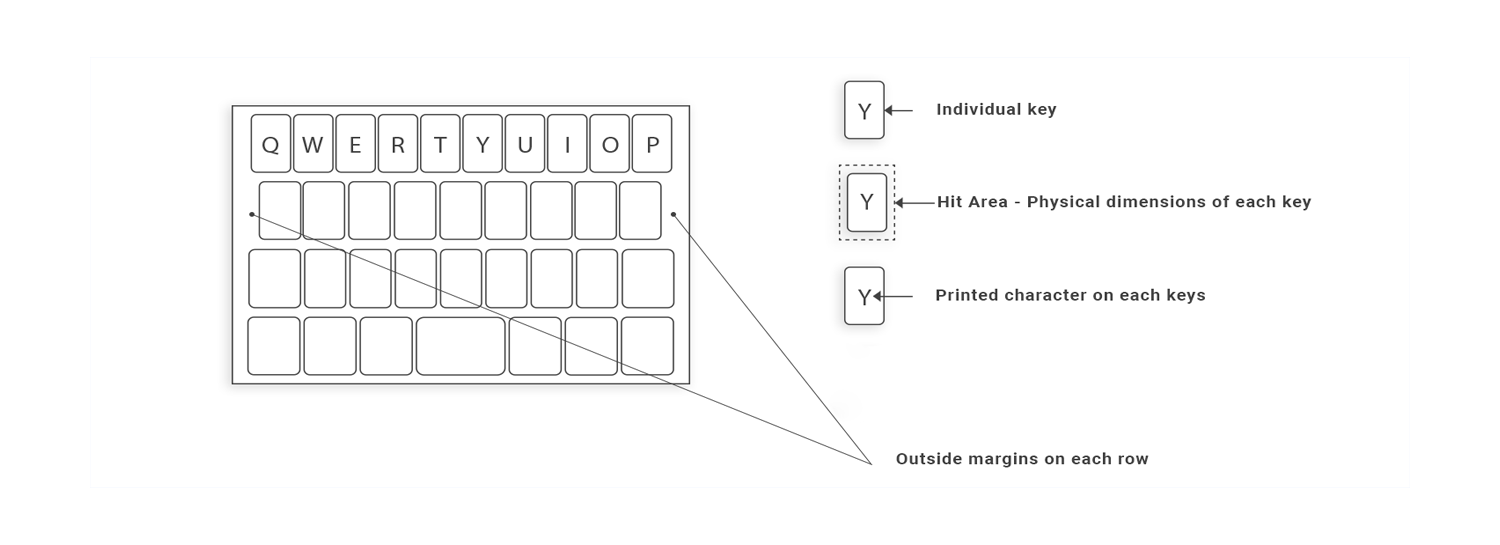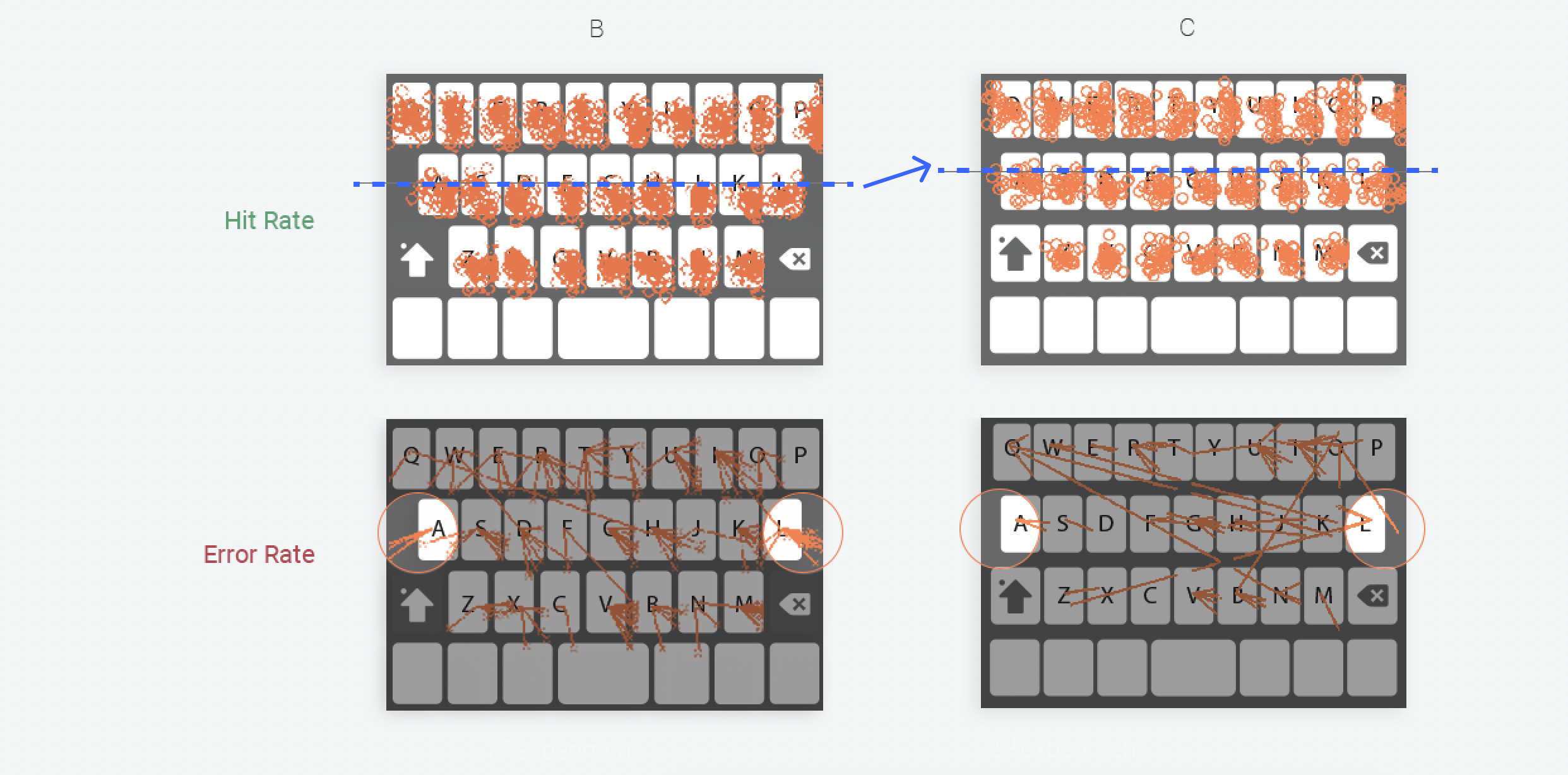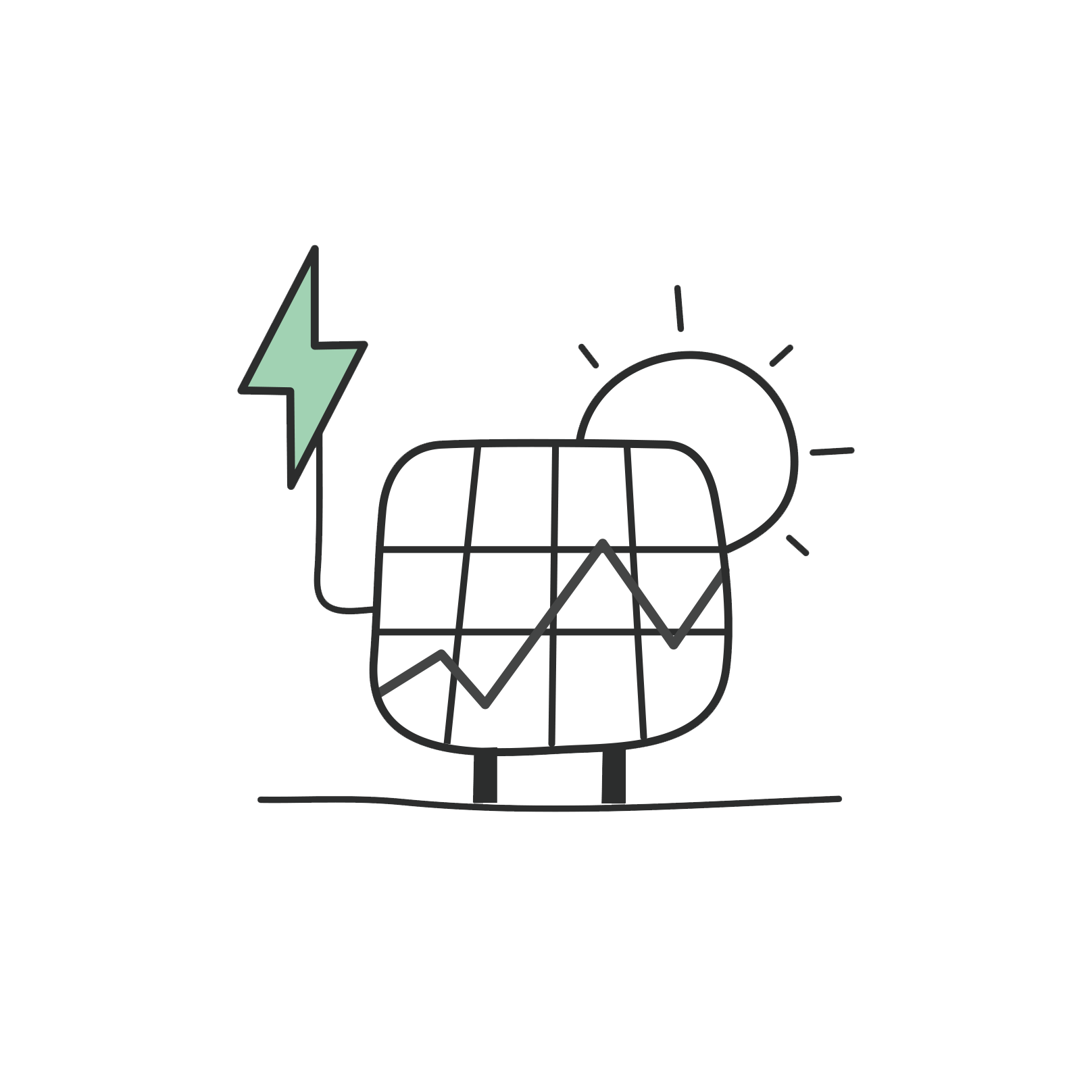Virtual Keyboard Enhancement
The keyboard is an essential part of any smartphone experience. However, the ordinary and third-party keyboards on smartphones are generally flawed. When I was working at Foxconn, we discovered that the third-party keyboard was not as accurate as we had hoped, and clients were not satisfied. So we decided to investigate the problem and make suggestions for improvement. We advised the vendor based on the experiment’s findings and helped them integrate the improvement into the virtual keypad, which not only improved accuracy by 10% but also led to the acquisition of a patent.
Experimental Programs
ParticipantsThere were typing interfaces, which were each designed with different layouts and touch areas. Twenty-four participants typed an alphabet letter randomly shown on their screen. Each subject typed a total of seventy-eight letters in each experiment.



Research
We analyzed several virtual keypads from Android and iOS platforms and discovered that the individual touchable area and key dimension might be the most important factors in improving accuracy. We began to construct by building the hypothesis from the touchable area.

First experiment
HypothesisA larger touchable area would give the user more space while typing the keypad. More room for users, thus allowing users to touch accuracy.
PredictionIf the text printing is moved upward and the key’s height is decreased, then users will shift downward and concentrate on the proper place.Test
{···} - Variable – touchable area
We created two prototypes and put them into the programs, one with a touchable area that was the same size as a single key and the other significantly bigger. The testing prompts an English letter of the alphabet each time, and the user has to enter in accordance with the English letter prompted, with the next English letter appearing when the input is complete. Each test program has 78 English letters (26 English letters x3).

We didn’t detect any improvement from group B in the initial round of testing, although we did discover some trends.
Second experiment
HypothesisBecause of the user’s perspective, when they are using a virtual keypad, they tend to press the low position of the key to read the letter.

If the text printing is moved upward and the key’s height is decreased, then users will shift downward and concentrate on the proper place.Test
{···} - Variable
letter placement
touchable area
extend the touch area of two end



The second experiment validated our assumptions, raising the accuracy by 8%. However, even though decreasing the height improves accuracy, it might cause the user to feel uncomfortable when using it.
Position deviation
The user’s point of view affects the touch deviation of position.
Printing location
Because of the printing location, users tend to press the lower and lower-right area
Expended area
Utilizing the two-end area as a touchable area to increase the accuracy rate
 User also said….
User also said….
I’m afraid to press the key because the vertical dimension is too small.


